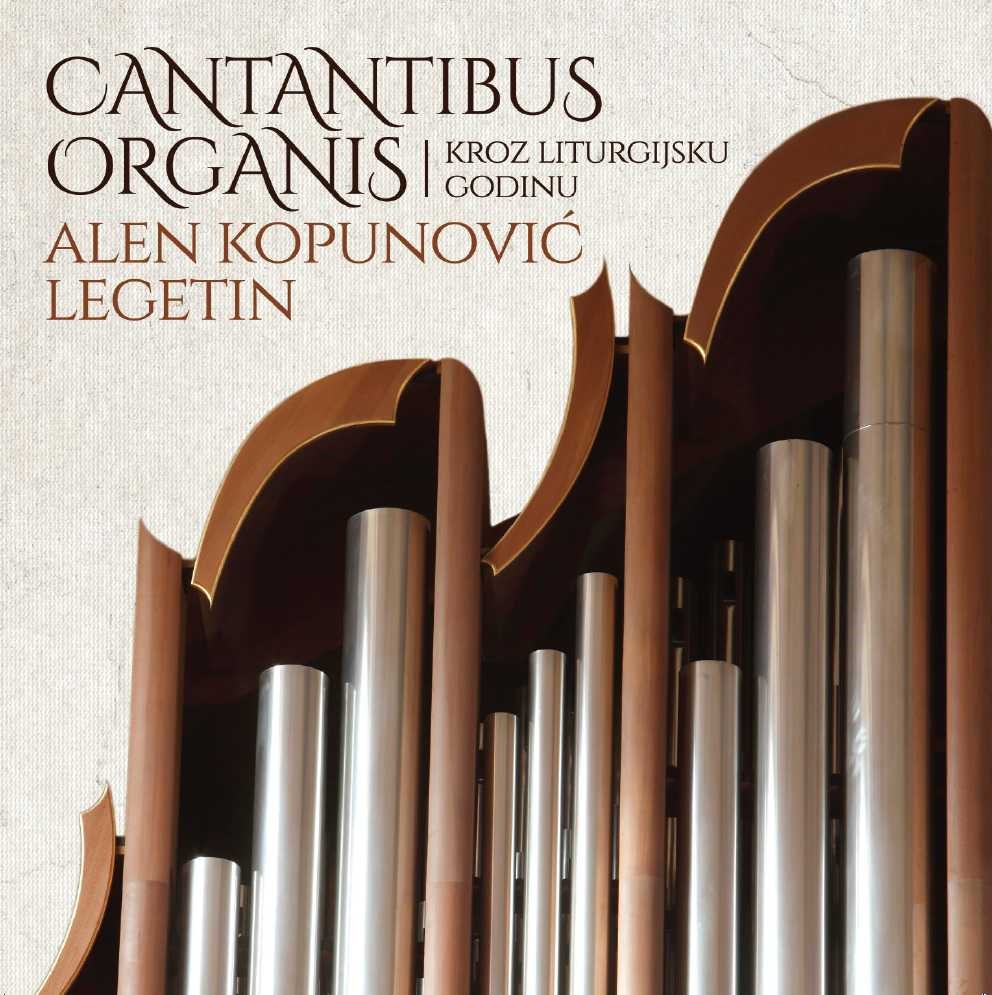ALEN KOPUNOVIĆ LEGETIN – CANTANTIBUS ORGANIS

The album "Alen Kopunović Legetin – Cantantibus Organis" is available at all Croatia Records points of sale and on the webshop.
https://youtu.be/PyunvzzhSqY?si=EyCM2FRSes9jPeFf
"I dedicate this sound recording primarily to the Bishop of Požega, Msgr. Dr. Antun Škvorčević, then to the Diocese of Požega, and to all church musicians who work in the area of the Diocese of Požega as an encouragement and thanks to God for the gift of music, through which we lift souls to God through song and playing. I would like to thank the Požega Cathedral Chapter of St. Peter for providing the time for recording, the cathedral pastor Mario Večerić for assisting during the recording, the Ministry of Culture and Media of the Republic of Croatia, and the producer and sound engineer Damjan Pirović," are the words of Alen Kopunović Legetin.
REVIEW OF THE ALBUM "CANTANTIBUS ORGANIS" BY ALEN KOPUNOVIĆ LEGETIN
This recording, with its name Cantantibus organis, reveals the nomen et omen, the name and original meaning of organ music, confirming the rule of the Second Vatican Council's Constitution on the Sacred Liturgy Sacrosanctum Concilium on the importance of the organ, and I can freely add the organist who, as the subject of the story, makes the organ, as a traditional musical instrument, with its sound, "add a wonderful splendor to church ceremonies and greatly elevate the heart to God and to heavenly things." (No. 120).
In this praiseworthy project of glory and thanksgiving, reflection in the selection of the piece and the manner of performance comes to the fore with a contemplative heart that sees more clearly and brilliantly, warmer and more human, more communicative and playful as in the gift of Wisdom that played while it created. Each register is chosen according to the call of the heart in prayer before the Source of beauty and splendor, and yet unobtrusively and clearly, as in the example of Saint Cecilia who exclaimed "fiat cor meum et corpus meum immaculatum". From that and such a heart also springs this reflection on the magnificent pieces of the organ tradition, following new expressive possibilities in sacred music.
Even the praise of death and life sounds on the same track, filled with heavenly serenity in the testimony of the Passion in the organ chant cantantibus organis or cantatibus origis (singing while they were tortured), so this sound recording becomes a testimony of a life (musical) journey filled with faith that in all the nuances of life knows how to find a chant (composition) that corresponds to that spirit of the testimony of the Logos that sets all the notes in motion from one instrument created for the glory of God, uniting in itself all the instruments with which Christ the Lord is celebrated, praised and honored. Although from the 18th century the organ also took on its recognizable artistic dimension as a counterweight to the altar and thus became a significant element of the beauty of the decorated church space with its artistically crafted casings, they became particularly suitable for concerts of spiritual and church music.
This is evidenced by the magnificent work of the German organ master Wolfgang Eisenbarth from 2007, which enriches the Diocese of Požega with its distinctive tonal expression, which is a gift from Msgr. Antun Škvorčević and a kind of thanks from the excellent organist Alen Kopunović Legetin. The compositions touch on the entire liturgical year in a stylistic range from the 17th to the 21st century of musical expression in a thematic harmony that, focused on the Word it celebrates, remains focused on its richness translated into a unique experience of the magnificent and luxurious sounds of the "queen of instruments". However, it is worth highlighting the works that exude an eternal beauty that first settled in the heart of the performer, and these are: Electa ut sol (cinq invications) by Henri Dallier (1849-1939) in which the organist contemplates the One who, clothed in the Sun, gives birth to the Sun and radiates it. Then Bist du bei mir BWV 508 by Johann Sebastian Bach (1685-1750) in an arrangement for organ by the performer himself, in which the arranger recognizes the almost romantic side of Bach in the eternal melody that permeates this composition. We can single out the timeless Hallelujah from the oratorio Messijah HWV 56 by George Frideric Handel (1685-1759), which accompanies a choir of sublime and timeless beauty, and Fiat Lux by Theodore Dubois (1837-1924), which introduces us to the sonorous books of Creation. It is also worth mentioning the premiere of a praiseworthy composition that, with its musical semantics, belongs to the contemporary works of Josip Prajz, Sursum corda (1994). What unites all the authors and compositions is indicated by the word in the album title "Cantantibus", which is noticeable in each composition as a guiding thought. The author not only plays but also sings-cantantibus all the works, making each work exude spontaneity, immediacy, noble simplicity, ease and musicality that comes from the inspiration of the call of the Logos, which the author brings out from the vault of the heart where that Word is deeply dwelling.
Assoc. Prof. Art. Blaženko Juračić MA Comp. Church Music
Art Academy in Split